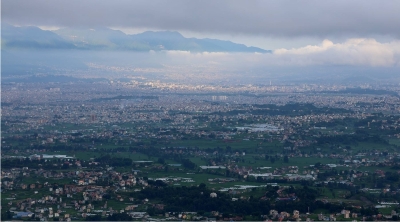No time to waste
Pashupatinath temple is imminently faced with a risk of collapse thanks in part to the burgeoning number of burrowing rodents that have undermined the temple infrastructure from within and, in larger part, to the increase in extraction of sand from the abutting Bagmati River. The river has already cut away two feet of turf from under the stairway leading up to the main temple from Aryaghat. As a result, cracks have opened up in the staircase and nearby stonework. The main temple too is in a bad shape. Conservationists warn that if immediate measures are not taken, the whole structure might go down.
Pashupatinath area trustees assure that an official geological study will be carried out “soon” in order to find out the real state of affairs. Clearly, there is a huge gulf between commitments and actual work on the ground. The rat holes dotting every nook and cranny of the temple premises is a testament that no renovation work has been carried out there since time immemorial. Pashupatinath is considered one of the holiest pilgrimages not just for the majority of Nepalis, but all Hindus. Consequently, it is a major draw for Indian religious tourists each year. More importantly, this monument, included among the World Heritage Sites, is a national treasure. There is no time to waste. Whatever the reasons for the apathy of agencies concerned in the past, corrective measures should be adopted without delay. There is an urgent need to halt extraction of sand from Bagmati River, introduce apposite pest control measures and repair the damaged monuments. No cost is big enough to save this symbol of national identity.





